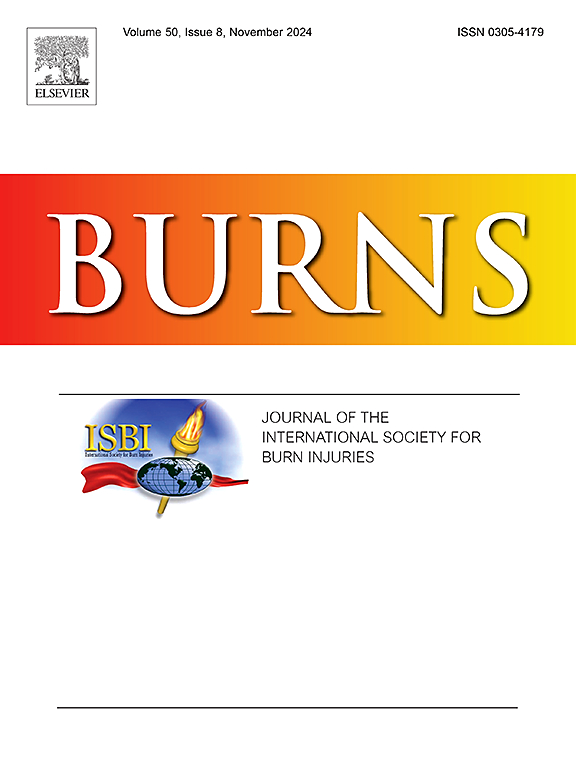Trends and cross-country inequalities in global burns burden among children and adolescents: A population-based study from 1990 to 2021
IF 3.2
3区 医学
Q2 CRITICAL CARE MEDICINE
引用次数: 0
Abstract
Background
Burns among children and adolescents represent a significant global health burden, leading to substantial morbidity and disability. This study aimed to analyze the trends in burn incidence, prevalence, and years lived with disability (YLDs) from 1990 to 2021, and to project future trends to 2035, highlighting global and regional disparities.
Methods
We utilized data from the Global Burden of Disease (GBD) database covering 204 countries and territories. Burn data were extracted from multiple sources including hospital records, health surveys, and national health databases. Trend analysis was projected using the Bayesian age-period-cohort (BAPC) model. Health inequality was assessed using the slope index of inequality (SII) and the concentration index (CI).
Results
In 2021, the global incidence of burns among children and adolescents was 8,484,254 cases, with an age-standardized incidence rate (ASIR) of 1315.94 per 100,000 population, showing an annual reduction of 1.33 % from 1990. The prevalence and YLDs also showed significant annual declines. Males had higher incidence rates than females. Younger children (0–4 years) experienced the highest incidence rates, while adolescents (15–19 years) had the highest prevalence. Regional disparities were evident, with Central Asia and Central Europe having the highest ASIRs. The SII and CI indicated persistent socio-economic health disparities, with lower socio-demographic index (SDI) countries bearing a disproportionate burden. Predictive analysis suggests a continued decline in burn incidence, prevalence, and YLDs through 2035. Additionally, burns among adolescents and young adults result in significant loss of labor force, exacerbating socio-economic challenges in affected regions.
Conclusion
The global burden of burns in children and adolescents has decreased significantly, yet substantial disparities persist across different regions and socio-economic strata. Continued efforts in improving burn prevention, treatment, and rehabilitation are essential to further reduce the burden and address health inequalities.
求助全文
约1分钟内获得全文
求助全文
来源期刊

Burns
医学-皮肤病学
CiteScore
4.50
自引率
18.50%
发文量
304
审稿时长
72 days
期刊介绍:
Burns aims to foster the exchange of information among all engaged in preventing and treating the effects of burns. The journal focuses on clinical, scientific and social aspects of these injuries and covers the prevention of the injury, the epidemiology of such injuries and all aspects of treatment including development of new techniques and technologies and verification of existing ones. Regular features include clinical and scientific papers, state of the art reviews and descriptions of burn-care in practice.
Topics covered by Burns include: the effects of smoke on man and animals, their tissues and cells; the responses to and treatment of patients and animals with chemical injuries to the skin; the biological and clinical effects of cold injuries; surgical techniques which are, or may be relevant to the treatment of burned patients during the acute or reconstructive phase following injury; well controlled laboratory studies of the effectiveness of anti-microbial agents on infection and new materials on scarring and healing; inflammatory responses to injury, effectiveness of related agents and other compounds used to modify the physiological and cellular responses to the injury; experimental studies of burns and the outcome of burn wound healing; regenerative medicine concerning the skin.
 求助内容:
求助内容: 应助结果提醒方式:
应助结果提醒方式:


